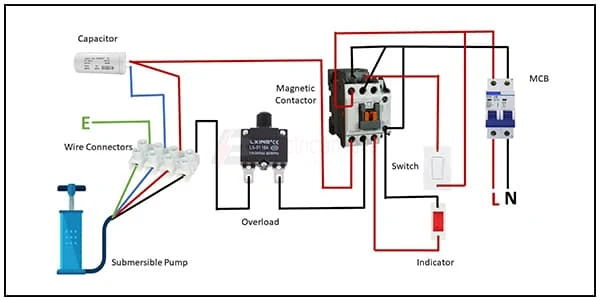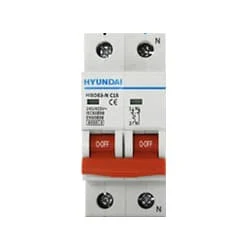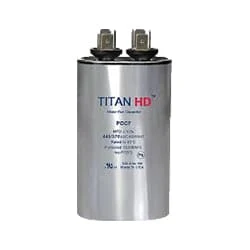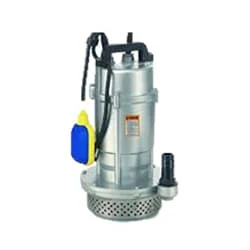submersible water pump electrical Wiring | water pump electrical connection
Submersible water pump electrical Wiring:
This Diagram Shows A Submersible Pump Is an Air-Tight Sealed Motor Close-Coupled To The Pump Body. A Submersible Pump, Also Called An Electric Submersible Pump, Is a Pump That Can Be Fully Submerged In Water. The Motor is Hermetically sealed and close-coupled to the body of the pump. A Submersible Pump Pushes Water to The Surface by Converting Rotary Energy into Kinetic Energy into Pressure Energy.
Diagram of Submersible water pump electrical wiring:
 |
| Fig 1: submersible water pump electrical Wiring |
Components Need for this Project:
You can get the components from any of the sites below:
- DP MCB [See Buy Click Amazon]
- Magnetic Contactor [See Buy Click Amazon]
- Overload [See Buy Click Amazon]
- Switch [See Buy Click Amazon]
- Indicator [See Buy Click Amazon]
- Wire Connectior [See Buy Click Amazon]
- Capacitor [See Buy Click Amazon]
- Submersible Pump [See Buy Click Amazon]
*Please note: These are affiliate links. I may make a commission if you buy the components through these links. I would appreciate your support in this way!
$ads={1}
Read Also:
Components used to make the Submersible water pump electrical Wiring:
01. DP MCB
 |
| Fig 2: DP MCB |
Double pole MCB can control two wires. This circuit breaker is generally used in single-phase electric lines. Double pole MCB circuit breaker input has two wires supply two wires and an output. In a single-phase line, A double-pole MCB circuit breaker is used to give good production. This circuit breaker is provided through phase and neutral circuit breaker, it is very safe. This circuit breaker is preferred for home appliances. A DP MCB usually trips for 2 reasons 1. Overload 2. Short circuit.
02. Magnetic Contactor
 |
| Fig 3: Magnetic Contactor |
A magnetic contactor is an electrical device used for load control, automation, and protection. It is much like a magnetic reel. However, relays are generally used for low power and voltage, on the other hand, when we think of high power, these heavy-duty contractors only come to mind. It basically works by switching the load on and off. It has 3 terminals whose inputs are denoted as L1, L2, L3, and outputs as T1, T2, and T3. The circuit of the load is made in automation mode or protection using auxiliary contacts. It has two types of terminals. 1) Normally Open (NO). 2) Normally Closed (NC)
03. Overload
 |
| Fig 4: Overload |
Overload relays are often used to protect the motor from excessive current flow. Overload relays are used to protect the motor from overheating. Besides some specific faults such as phase to phase, phase to ground, etc. overload relay provides protection to the motor. A thermal overload relay works on the principle of bimetallic strip electro-thermal characteristics. When the bimetallic heats up, the trip function in the overload relay turns on and disconnects the power supply to the contactor coil, thus tripping the overload relay and breaking the motor current and saving the motor.
04. Switch
 |
| Fig 5: Switch |
A Single-Pole, Single-Throw (SPST) Switch. It's Got one Output and One Input. The Switch will Either be Closed or Completely Disconnected. SPSTs are Perfect for on-off Switching. They're also a Very Common Form of Momentary Switches. SPST Switches are Commonly Used in a Variety of Electrical Circuits and Applications, Such as Turning on And off Lights, Fans, and Other Appliances. They can Also be Used to Control the Flow of Electricity to Different Parts of a Circuit or to Switch Between Different Circuits Altogether.
05. Indicator
 |
| Fig 6: Indicator |
An electric current Flow Indicator Senses The electrical Current Through an electrical device And produces visible feedback to Indicate Proper Operation. The Current Flow Indicator Has Voltage And Current Regulation Craving First And Second Inputs Connected To The First And Second Conductors, Respectively. This Publication Provides updated Statistics on a Comprehensive Set of social, Economic, Financial, and Environmental Measures as Well as Select Indicators for Sustainable Development Goals.
06. Wire Connector
 |
| Fig 7: Wire Connector |
A Terminal Block Consists of Modular Housing With An Insulated Body That Secures Two Or More Wires Together. Terminal Blocks—Also Referred to as terminal Connectors, Connection Terminals, or Screw Terminals—are Used in a Wide Array of Applications Where Electrical Systems Need to be Safely Connected. Electrical Terminals are a Class of Electrical Connectors That are Used to Transfer Electrical Current From a Power or Grounding Source to use. Terminals "Terminate" by Crimping or Soldering to Wire or Cable.
07. Capacitor
 |
| Fig 8: Capacitor |
A Run Capacitor is Used in Single-Phase Motors to Maintain a Running Torque on an Auxiliary Coil While The Motor is Toaded. These Capacitors Are Considered Continuous Duty While The Motor is Powered And Will Remain in The Circuit While The Starts Capacitor Drops out. The Run Capacitor, Also Sometimes Called an “A/C Capacitor,” Uses Its Stored Energy to Turn or Run The fan Motor. Without The Run Capacitor, The Fan Cannot Turn. Run Capacitors Are Also Rated by Voltage Classification. The Voltage Classifications are 370V and 440V.
08. Submersible Pump
 |
| Fig 9: Submersible Pump |
All kinds of Submersible Pump Suppliers, and Full Global Submersible Pump Technology Support. Well-known submersible Pump manufacturer, global submersible Pump technology support. Sewage Pump. Screw Pump. Water Pump. Fire Pump. Styles: water pump, centrifugal pump, fire pump, sewage pump.All kinds of Submersible pump suppliers, and full global submersible Pump technology support. global submersible Pump technology support, Well-known submersible Pump manufacturer.
Thank You for visiting the website. Keep visiting for more Updates
$ads={2}
Frequently Asked Questions
Is a submersible pump AC or DC?
AC Solar Submersible Pumpset uses alternating current flow as its power source, which is available on almost every power supply grid. An inverter can also be used in a situation where the power supply source is DC. DC Solar Submersible Pumpset, on the other hand, requires Direct Current flow to operate, which is derived from solar panels.
What are the electrical requirements for a submersible pump?
A 1 HP submersible well pump will require a( 2.5) KW internally regulated generator to operate the pump. A 30 amp breaker means the pump is smaller than 2 hp will use ~13 amps or 2300 watts during operation and will require a 4 KW internally regulated generator to operate the pump.
How many wires does a submersible pump have?
This week we'll be talking about the difference between 2 and three-wire submersible well pumps. 1st, both types feature a ground wire which shouldn't be counted. 2 wire pumps will have two black wires and a green wire. Three wire pumps have black, red, yellow, and green wires.
What size wire for a 1 hp submersible pump?
1. According to the table, #12 cable is large enough for the 1 HP motor so the percent of the maximum allowable cable used by the 210-foot run was 210 ÷ 359 = 58.5%, since 359 feet was the total allowable.
What voltage is an electrical submersible pump?
It operates on 3-phase power at voltages as low as 230 and as high as 5,000, with amperages between 12 and 200. Generally, the length or diameter determines the motor's HP rating.










Post a Comment
Do leave your comments